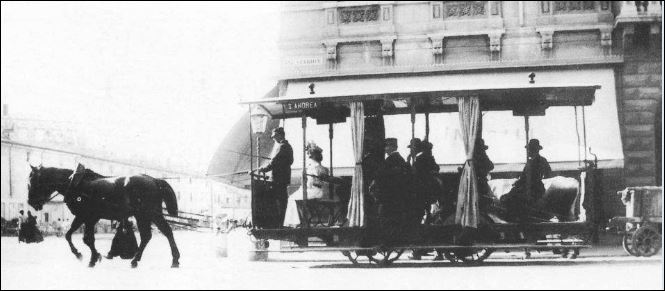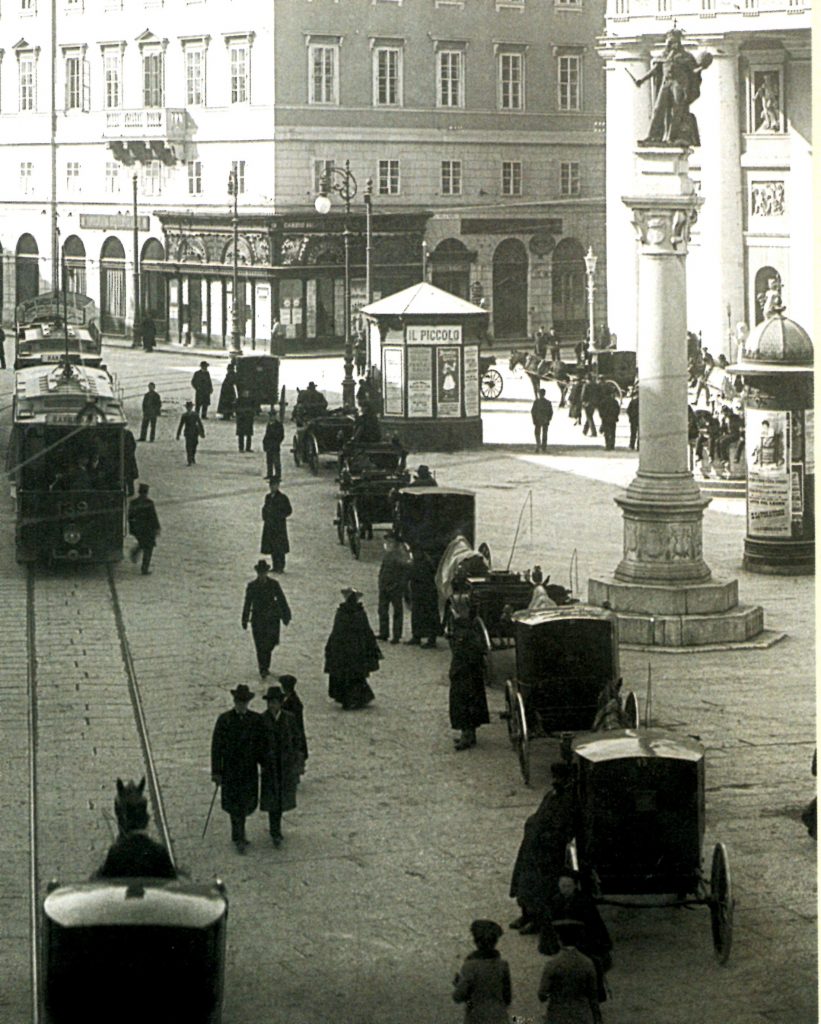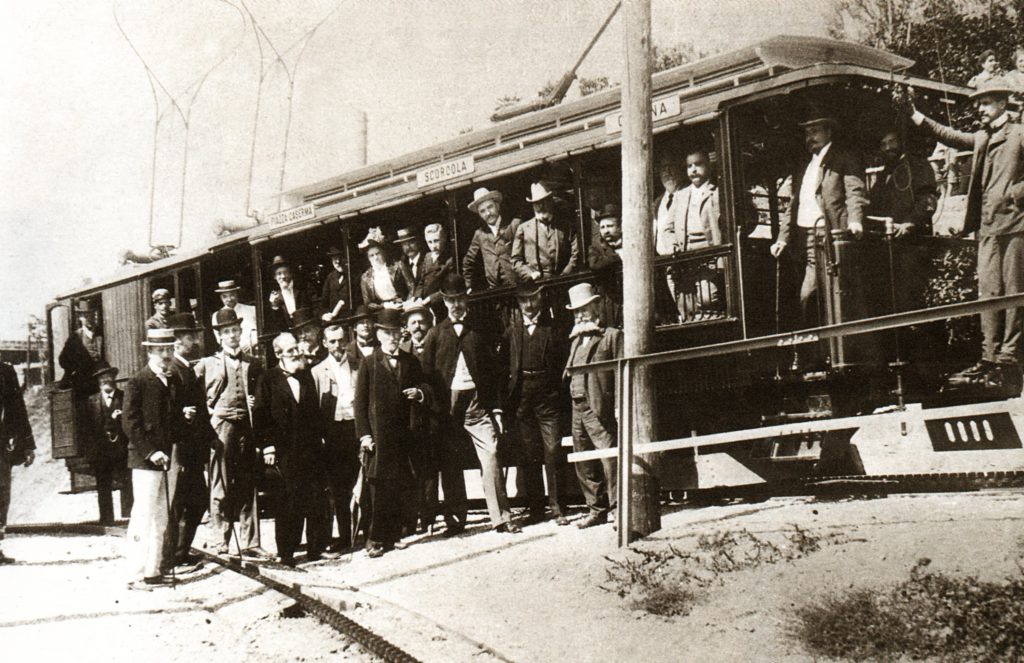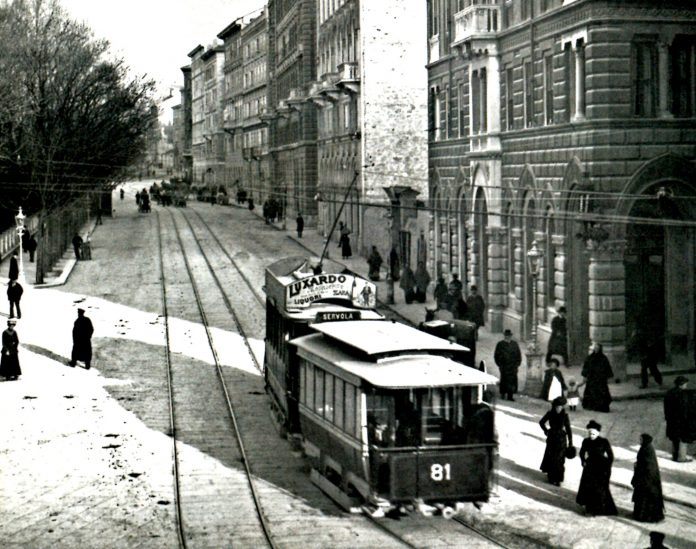by Alessandra Ressa
Even before the advent of electricity, which revolutionized public transport together with street lightning and industry, Trieste had an extensive trolley service pulled by horses.
As early as 1860 there were so-called omnibuses, with convertible models for summer transport. To signal the intended stop, passengers had to pull a rope tied to the driver’s arm. These vehicles were substituted by bigger models, still pulled by horses, but this time running on tracks.

This latest achievement soon became the pride and joy of Triestini, who could claim to have the same modern transport system Paris had installed only a year earlier. Milan followed the example only six years later.
The 20th Century swept away gas lamps and the romantic tram pulled by horses. Trieste’s municipality commissioned the newly established Società Triestina Tramway the operations and management of the new electric tram line. Its inauguration, on October 2nd 1900, was one of the greatest events in Trieste’s history.
Traveling at the then breakneck speed of 30 kilometers per hour, the new electric tram connected Rotonda del Boschetto, at the foot of San Giovanni, to via Giulia, Corsia Stadion (today’s via Battisti), via del Torrente (today’s via Carducci) all the way to Barcola.

Triestini gathered for the event and clapped their hands while the vehicle performed its first ride along the city’s main roads. To take part in the groundbreaking affair, three full trains of special guests reached Trieste’s main station. The new vehicles were painted dark green and cream. To everyone’s amazement, it took a record 28 minutes from Rotonda del Boschetto to Barcola.
People who attended the event described it as quite a sight. At night, bright lights shone from the interior of the vehicles, while contact with the electric line during movement provoked sparkles that looked like auspicious fireworks. A popular song was especially created for the event, which could be soon heard everywhere in town, “Eviva el tran eletrico che cori e no va pian” (long live the electric tram, very fast and never slow).

In the years that followed, Società Triestina Tramway extended its network to San Sabba, Servola and Roiano. In 1901 the ambitious project to connect Trieste with Opicina through the steep hill of Scorcola was successfully launched. A special cable came from Vienna to ensure the safety of the ride, and the Trieste-Opicina trolley opened its doors to enthusiastic travelers on September 9th 1902.
Thus horse-pulled trams disappeared from the scene, only to reappear shortly during the first world conflict. The 1920s and 1930s saw Trieste trams at their maximum popularity and success. In 1935 the “tram with slippers” trolleybus (tran con le papuze in local dialect) began service. It connected Piazza Goldoni to Campo Marzio. It was given the nickname because, contrary to its rivals, it was very quiet.

Starting the 1950s Trieste’s municipality began to dismantle the tram lines. The increased number of cars on the road, a consequence of the booming economy but also of the growing role of the lobbies of the automobile industry, made electric public transport not profitable enough for public administrations. Little by little, year after year, Trieste’s beloved urban trams began disappearing, to be replaced by gasoline engine buses.
The last tram, number 9, from San Giovanni to Campi Elisi, went permanently out of service in 1970. Only the Trieste-Opicina line survived, mainly as a tourist attraction, until five years ago, when two trolleys were involved in an accident and the last tram in Trieste went out of order. Although five years have gone by, so far there has been no announcement of when the Trieste-Opicina line will resume service.





























